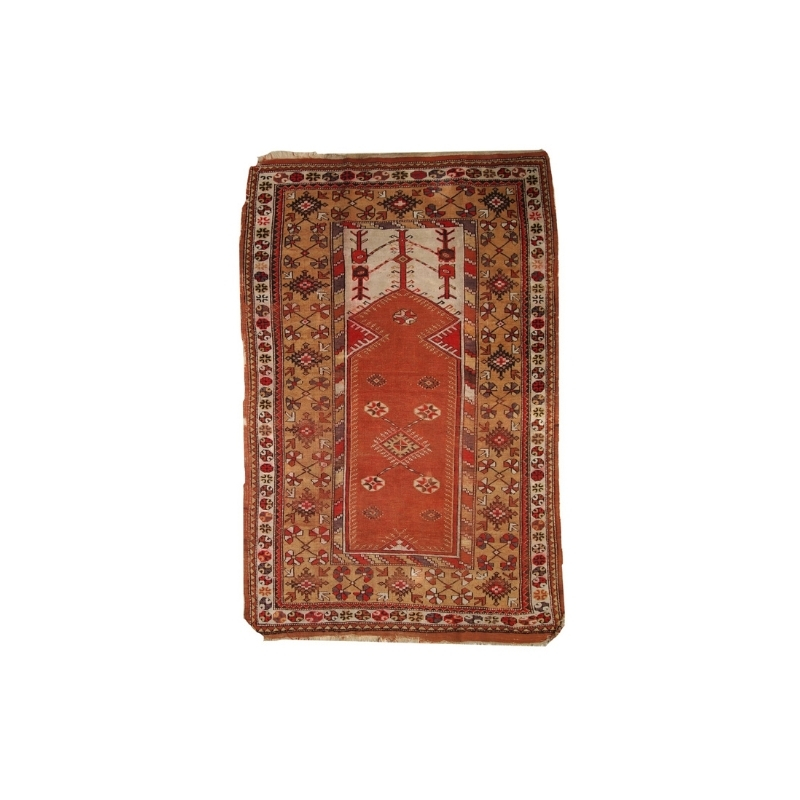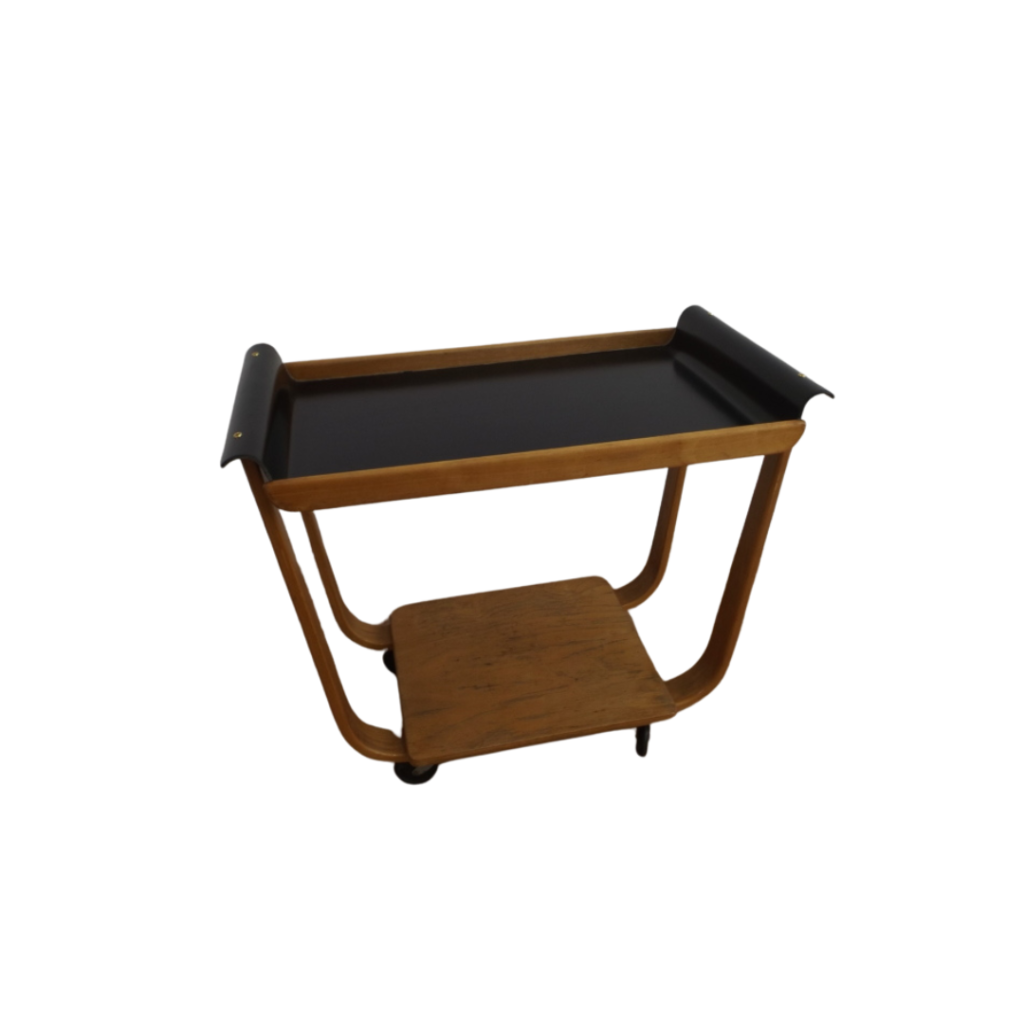IN HIS 1932 POEM, ABOUT...
IN HIS 1932 POEM, ABOUT ABSOLUTE ART, organic architect Bruce Goff wrote the prelude for what would become two of his most famous compositions. The Bavinger House and the Ledbetter House rocked the foundations of convention when they were built in Norman, Oklahoma, in the 1950s. So extraordinary in design, each captured a spread in Life magazine. Today they are once again in the national spotlight, thanks to a University of Oklahoma architecture professor, who has secured their inclusion in the National Register of Historic Places.
Arn Henderson first discovered Goff when he came to OU as a student in 1956. I remember my first week here, wandering the halls, looking at student drawings, thinking to myself, What is this crazy stuff? He soon found out the drawings were by students of Bruce Goff, who directed the School of Architecture from 1947-55. Henderson became intrigued with the philosophy of organic architecture and Goffs design legacy of buildings with dramatic contrasts between geometric form and natural elements of earth, sky and water.
Goff embraced the concepts of Louis Sullivan and Frank Lloyd Wright and extended those ideas to a new level, explains Henderson. Wright so respected Goff, he once asked him to come to Taliesin and work with him, but the young architect refused, saying he feared losing somethingthat something being Bruce Goff. Goff was an extraordinary human being, says Henderson. He was like a sponge, soaking up ideas from different disciplines and applying them to architecture. A lover of classical music, he had a record collection numbering in the thousands. He was influenced as much by the works of composer Claude Debussy as he was Frank Lloyd Wright.
Like Debussy, Goff developed a highly original system of harmony and structure. Each maintained that exploration was the essence of their craft. Not content to play along with the burgeoning international trend toward minimalism, Goff countered the famous Less is more quote by German architect Mies von der Rohe with Not much is not enough.
cont
Although he respected the work of Von der Rohe, he held no such esteem for the imitators who followed, once referring to the glass boxes of modern architecture as Mies burgers. Goffs main objection to the European influence, Henderson explains, was that it is focused on Euclidian geometry with little regard for the client or the site. It didnt matter where the lot was, the building would be the same, he says. This was anathema to Goff, who in his projects created a harmonious relationship of materials, design and location. Both the Bavinger and Ledbetter houses are perfect examples of Goffs skill as a successful alchemist of material, site and structure.
When the Ledbetter House was under construction during the late 1940s, the intersection of Brooks and Chautauqua became known as calamity corner for the number of curious spectators who slowed to get a look at the unusual design. In the yard, curving sandstone walls seem to disappear into the earth and reappear in another location, defining the driveway, the entry, the garden, even the house itself. Goff said he wanted the stone to appear as it might in its natural state. This is also evident in the homes entryway, which captivated visitors with a waterfall spilling over protruding rocks and dropping into a pool beneath a ramp that leads to an upper level.
Like a composer, Goff established a prominent rhythm of repeating elements in the homes exterior. The flow of the garden wall and the front glass wall are similar yet distinct variations on a theme. A ribbon of skylight separating wall and roof adds yet another element of nature to the composition. Everywhere one finds natural elements peacefully co-existing with geometric shapes.
Metal disks, seeming to float in space, provide both the roof of a carport and a shady spot for a table and chairs in the garden. The homes front wall consists of large panes of glass, set in a saw-tooth pattern, which echo the undulating wall in the back. Goff set each pane at an angle so the glass would not reflect the large fraternity house across the street. Playful elements, such as dime store glass ashtrays were set in the wood mullions, not only to provide further repetition of form, but also to capture the light of the sun or moon and sparkle like prisms. Although commissioned by H. E. and Lois Ledbetter, the house is almost as well known for its second owner, OU art professor Joe Taylor, who purchased the property in 1955. Taylors careful landscaping greatly enhanced the architects design and love of natural elements.
cont
Five years before Taylor moved into 701 West Brooks, another OU art professor and his wife commissioned Goff to design their home. Eugene and Nancy Bavinger had lofty plans for the seven-and-a-half wooded acres they had purchased several miles east of Norman. They told Goff they were disenchanted with the average tract house and longed for a home with open space and connection to the outdoors. The home that Goff designed would become his signature piece, known in architectural circles around the world.
To provide Goff the necessary raw materials, Bavinger purchased an outcropping of surface rock on a farm about three miles from his building site. With the help of dynamite, sledge hammers and a flatbed truck, Bavinger and a group of OU architecture students hauled 200 tons of ironrock to the site and began, stone by stone, laying the curved rock wall, which would stretch 96 feet when finished. In his application to the National Register of Historic Places, Henderson writes, The house required five years to build and is as much testament to Bavingers endurance as it is to Goffs creativity.
In 1955, the Bavingers, with their two young sons, moved into a domicile quite unlike any on earth. With circular rooms seemingly suspended in air from a central staircase and a first floor consisting of a goldfish pool and lush vegetation, the Bavingers had indeed escaped the typical tract house of the day.
In an effort both to offset the costs of construction and to appease local curiosity, the family opened their home to visitors every weekend, charging $1 admission. Henderson, along with other OU architecture students, served as a tour guide at what was once Normans most popular Sunday matinee. By the time Life magazine featured the home in a 1955 article titled Space and Saucer House, the Bavingers had collected $4,000 in admissions. With its walls of rough natural stone thrusting upward out of the earth in a setting of woods and stream, it is an architecture of nature, writes Henderson.
Normally, buildings need to be at least 50 years old before being considered for inclusion in the National Register. The Bavinger House was accepted before the 50-year rule because it is considered a signature design of a master architect. It is a real tribute to Goff that his work met this criterion, says Henderson. Through his research over the years, Henderson says he has come to know Goff as a person, as well as an architect. He was a very warm individual, he says. A very charismatic, caring person. His life focused on his students. He hung out with them, late lunch with them. He even bought one of his students a winter jacket, when he realized the guy couldnt afford one.
Recently, Henderson discovered a cardboard box piled more than a foot deep with Goffs correspondence in his capacity as director. Ive read every scrap of paper. Its marvelous, he says.
Goff once wrote, Beauty...
Goff once wrote, Beauty bursts forth when it must, because the Artist feels the drive within . . . and no amount of discouragement can stop him. From Americas heartland, Goff transcended traditional ideals and proved to the world that architecture is an extension of nature, and the elements of sky, earth and water, its realm.
I loved this house I fi...
I loved this house I first saw it almost 40 years ago while a undergraduate at the University of Oklahoma it certainly influenced me to always be on the look out for some thing unusual in Home Architecture.
Although it took me almost 40 years I
found my own Frank Lloyd Wright,Richard Neutra,Marcel Breuer,Elliot Noyes, style home
The Goff home put me on the track ,
If you need any help, please contact us at – info@designaddict.com









